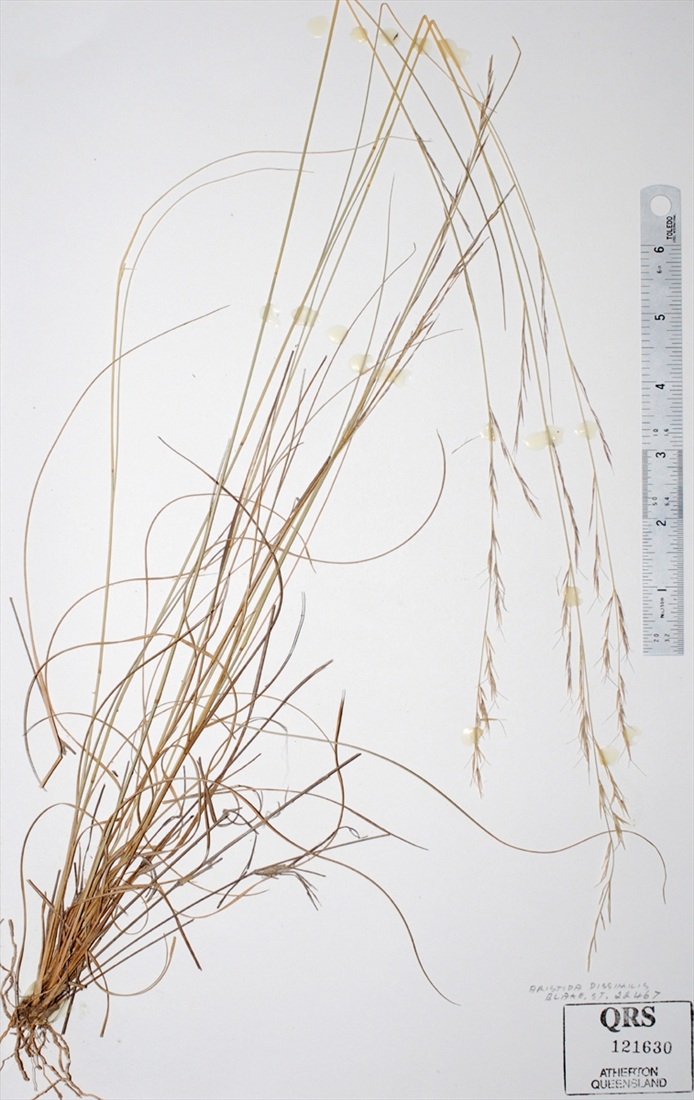Australian Tropical Rainforest Plants - Online edition
Aristida queenslandica var. dissimilis (S.T.Blake) B.K.Simon

Simon, B.K. (1984) Austrobaileya 2(1): 96.
Inflorescence an open panicle, elliptic, 9-64 x 2-4.5 cm. Primary panicle branches 5-11 cm long with orange glands at their bases. Spikelets solitary. Fertile spikelets pedicelled, comprising of 1 fertile floret, without rhachilla extension. Spikelets lanceolate, subterete, 6.2-10.5 mm long; breaking up at maturity, disarticulating below each fertile floret. Floret callus elongated, 0.5-0.8 mm long; pubescent, acute. Glumes deciduous; similar, exceeding apex of florets, thinner than fertile lemma. Lower glume lanceolate, 5.2-11 mm long, 0.8-1 times length of upper glume, membranous, without lateral veins, scabrous, apex acute, or acuminate, mucronate. Upper glume lanceolate, 5-10 mm long, 0.8-1.2 times length of adjacent fertile lemma, membranous, keeled, surface smooth to scabrous, apex acute, or acuminate, mucronate, awned. Fertile lemma lanceolate, subterete, 5-12 mm long, coriaceous, pallid and light brown, 3 -veined. Lemma surface scaberulous, margins involute and covering most of palea, apex acute, 3 -awned (1 long + 2 short). Principal lemma awn with 8-16 mm long limb, without a column, persistent. Lateral lemma awns 3-10 mm long, shorter than principal. Palea 0.2 times length of lemma, without keels. Anthers 3, 0.9-1.9 mm long.
Features not available.
Occurs in NEQ, CEQ and southwards to north-eastern New South Wales. Altitudinal range from near sea level to 780 m. Grows in closed forest, Eucalypt forest, deciduous vine thicket, various types of woodland, shrubland and in wooded grassland.





